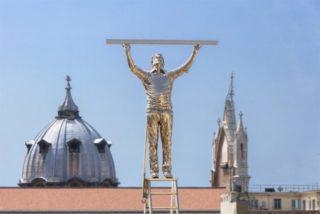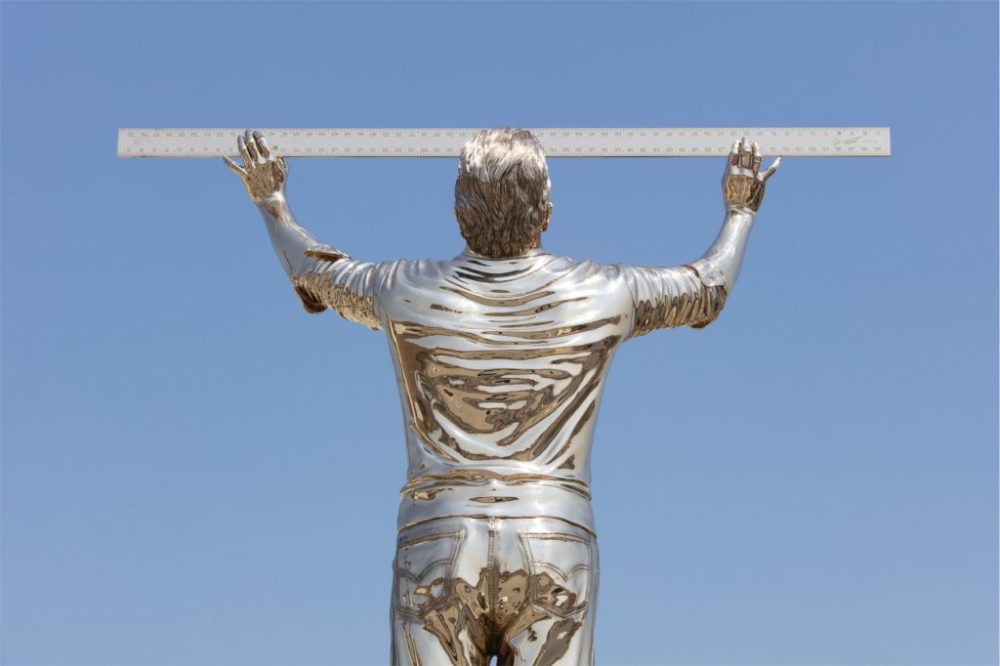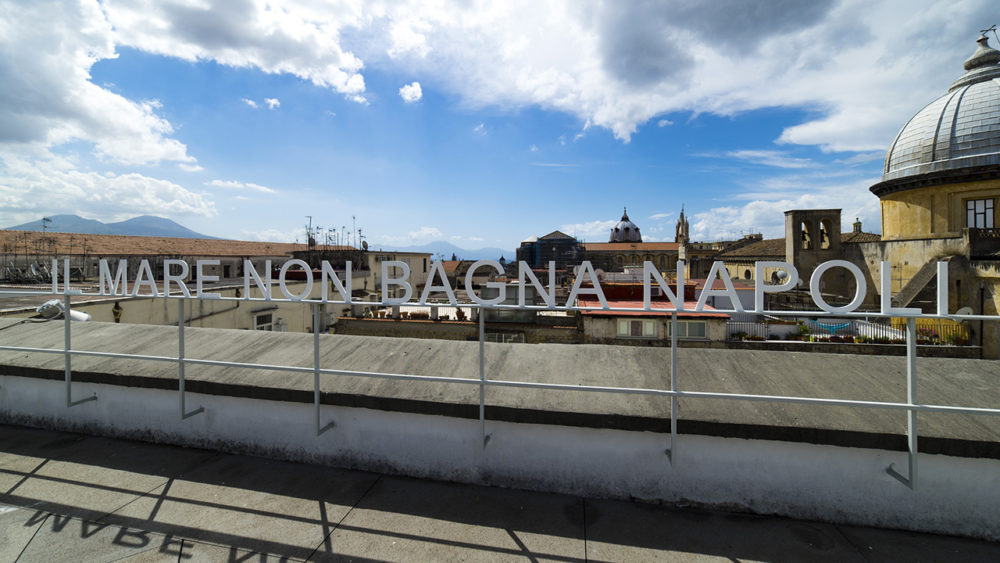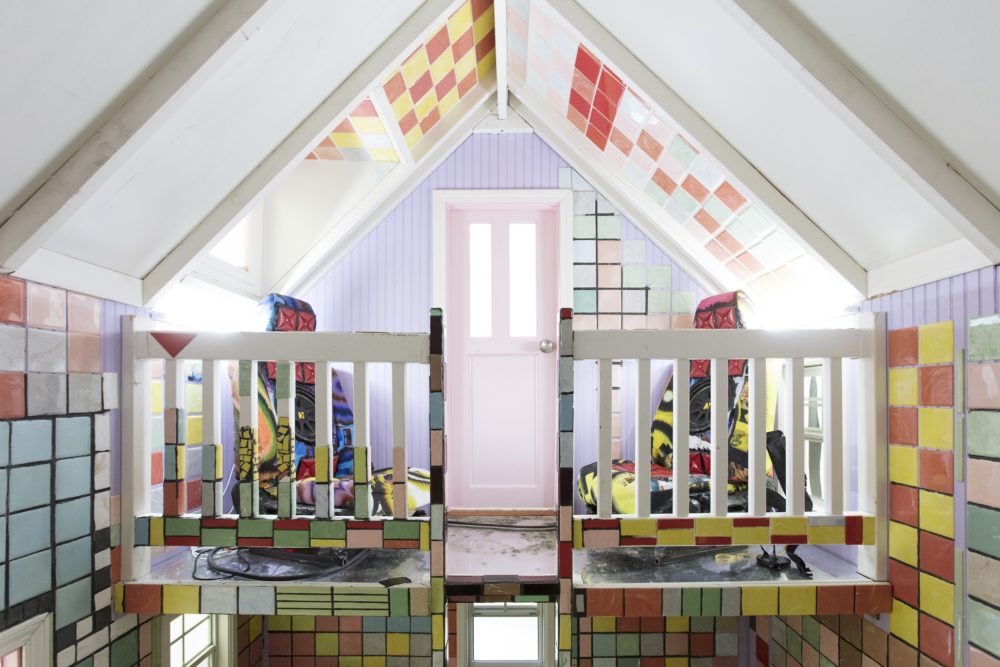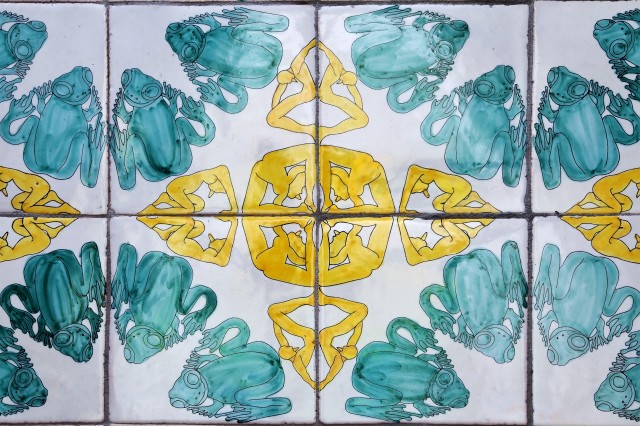Jan Fabre (1958, Antwerp) – a performer, designer, sculptor, author and theatre creator – is one of the most intriguing, complete and complex figures in the contemporary art world. Since the 70s, initially as a student at the Municipal Institute of Decorative Arts and then at the Royal Academy of Fine Arts at Antwerp, he has pursued an interdisciplinary approach devoted to exploring the most suitable ways of mastering the human body and its manifestations through the use of constantly evolving and changing techniques, materials and languages. Together with the skillful use of the potential of theatre, through the practices of narration and staging, Fabre explores human life and its many different expressions, combining elements such as dance, music, opera, performance and improvisation in a constant dialogue between the audience and himself.
In 1984, after being asked to create a show for the Venice Biennale entitled The Power of Theatrical Madness (a theatre marathon marked by a contamination of visual and performative languages lasting 4 hours 20 minutes), his practice based on the idea of the metamorphosis of the existing situation gained international renown. The relationship with the body that emerges from his performances is inextricably linked to the interest in other disciplines and forms of knowledge, based on the idea of change and interaction between elements of perception, both from the sensorial and spiritual worlds. Fabre thus ensures that philosophy, religion and science permeate his works in which he incorporates and transcends themes and concepts from the Flemish tradition using a contemporary approach: references to artists such as Hieronymus Bosch, Jan Van Eyck and Pieter Brueghel are therefore regenerated through a practice devoted to the celebration of the fragility and, simultaneously, the solidity of the beauty of mankind and the world in its interconnected processes. The artist himself has declared, “Everyone can be modelled, curved and moulded with a surprising degree of freedom.”
His sculptures should also be viewed within this context where everyday gestures and actions lacking in plasticity are represented in monumental casts of bodies in which the artist portrays himself. The artist’s solo shows include Homo Faber (KMSKA, Antwerp, 2006), From the Cellar to the Attic – From the Feet to the Brain (Kunsthaus Bregenz, 2008; Arsenale Novissimo, Venice, 2009), PIETAS (Nuova Scuola Grande di Santa Maria della Misericordia, Venice, 2011; Parkloods Park Spoor Noord, Antwerp, 2012), Hortus/Corpus (Kröller-Müller Museum, Otterlo, 2011), Stigmata, azioni e performance, 1976-2013 (MAXXI, Rome, 2013; MUHKA, Antwerp, 2015; MAC, Lyon, 2016). Fabre is also the first living artist to have presented an extensive solo show at the Louvre in Paris (L’ange de la métamorphose, 2008). The series The Hour Blue (1977 – 1992) was displayed at the Kunsthistorisches Museum in Vienna (2011), at the Musée d’Art Moderne in Saint-Etienne (2012) and at the Museum of Art in Busan (2013). The two series of mosaics made with the wing-case divisions of the scarab, Tribute to Hieronymus Bosch in Congo (2011-2013) and Tribute to Belgian Congo (2010-2013), were presented at the Pinchuk Art Centre in Kiev and at the Palais des Beaux-Arts in Lille (2013), as well as at the ‘s-Hertogenbosch (2016) to mark the 500th anniversary of Hieronymus Bosch, the year when Fabre presented the striking solo show Knight of despair/Warrior of beauty at the Hermitage in St Petersburg. In 2016 the exhibition Jan Fabre. Spiritual Guards also opened at the Forte Belvedere, Piazza della Signoria and Palazzo Vecchio in Florence while the retrospective exhibition Jan Fabre. Glass And Bone Sculptures 1977-2017 devoted to works made of bone and glass opened at the Abbey of San Gregorio in Venice in 2017.
A gallery of life-size self portraits of characters was displayed at Naples in Piazza Plebiscito in 2008 as part of the exhibition Il ragazzo con la luna e le stelle sulla testa (“The boy with the moon and the stars on his head”), curated by Eduardo Cicelyn and Mario Codognato. As the curators wrote, “Fabre presents five famous bronze sculptures which are situated within the semicircle of the piazza in one of the terraces of Palazzo Reale and in the colonnade of the church of San Francesco di Paola. Each sculpture-character interprets a role in relation to the collective imagination of the city.” The sculpture-characters include L’uomo che accende il fuoco (“Man lighting a fire”, 1999), L’uomo che misura le nuvole (“Man measuring clouds”, 1998), L’uomo che piange e ride (“Man crying and laughing”, 2005), L’astronauta che dirige il mare (“The astronaut who conducts the sea”, 2006) and L’uomo che scrive sull’acqua (“The man who writes on water”, 2006).
The Man Measuring the Clouds (American Version, 18 Years Older) 1998- 2016 was subsequently held on the terrace of the Madre museum, curated by Laura Trisorio, Melania Rossi and Andrea Viliani as part of the project Per_forming a collection, and presented simultaneously with the project Incontri sensibili at the Museum of Capodimonte, curated by Sylvain Bellenger and Laura Trisorio. The work is inspired by the statement made by the ornithologist Robert Stroud when he was freed from the prison of Alcatraz, when he declared that he would devote himself to “measuring the clouds”. Besides the quotation, which places the work within a specific historical and scientific context, the use of the self-portrait in this case also has an additional biographical reference since the work pays tribute to the artist’s younger brother, a dreamer who died prematurely. The staging of a memorial absence which takes the form of a sculptural presence becomes a double metaphor of both the characters represented whose union generates an inter-individual energy which turns into a lively movement, albeit within the static nature of sculptural form. By also expressing the sensation of planning the impossible (the attempt to measure a changing and unstable entity such as clouds), Fabre reflects on the status of the artist’s research, which resembles the quest of the scientist to go beyond the human limits of knowledge. As an artist and researcher, Fabre constantly tries to “measure the clouds”, admitting and declaring with his work that the quest for knowledge has insuperable limits which, however, it is possible to compare and address through experimentation. By following this experimental approach, the inexpressible can be expressed without betraying, as the artist himself states, intrinsic and underlying human and universal beauty.
[Anna Cuomo]
